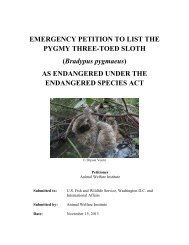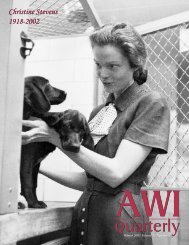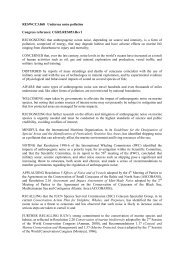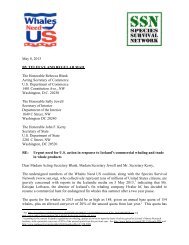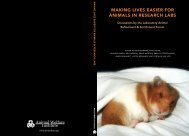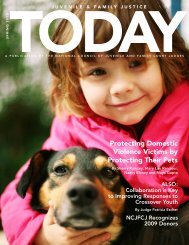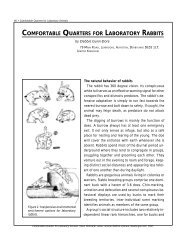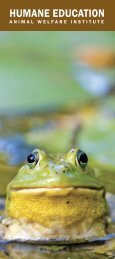A Common Bond - The National Link Coalition
A Common Bond - The National Link Coalition
A Common Bond - The National Link Coalition
- No tags were found...
Create successful ePaper yourself
Turn your PDF publications into a flip-book with our unique Google optimized e-Paper software.
A <strong>Common</strong> <strong>Bond</strong>: Maltreated Children and Animals in the HomeCase planning and management. When establishing goals or planning thetypes of intervention or services needed to achieve those goals, if animal abuseor threatened animal abuse was a key component of the family dynamic, then itis important to become familiar with the available resources in the community.For example, some counselors are trained to work with children andadolescents who abuse animals, and some humane societies have pet therapyprograms designed to work with at-risk children and their families. Check withyour local humane societies to determine if they can provide such a resourcefor your purposes. For a list of counselors who have been trained to work withthe issue of animal cruelty, please contact the Society & Animals Forum atwww.societyandanimalsforum.org. For information on programs for at-riskchildren, you can download a copy of <strong>The</strong> Humane Society of the United Statespublication Violence Prevention and Intervention: A Directory of Animal-RelatedPrograms at http://files.hsus.org/web-files/PDF/First_Strike_Directory_2004.pdf.Treatment and the evaluation of family progress. Child maltreatmentis complex and multidimensional and often occurs in the context of adysfunctional family; often one of the symptoms of the family’s dysfunction isthe abuse of animals in the home. Animal abuse in families, however, is morethan a symptom—it also represents an important interaction within whichpower and control, developing secure or insecure attachments, and handlingloss and separation are manifested. <strong>The</strong>refore, the treatment of the childand family may not only address the animal-related experiences; the familymembers’ relationship with their animal companions, and how they treat them,could also be an important factor in evaluating the family’s progress, includingusing family decision making about animal care and treatment.Learning to CareOne clinician involves the entire family when working with children who have abusedfamily pets. First, he determines if the parents can function effectively enough toensure the pet’s safety. Once that has been established, he explains to the parentsthat it is not only important in ethical terms, but that ensuring the animal’s safety isimportant to the child’s recovery: <strong>The</strong> child needs to see his parents acting in thatparental capacity. This clinician has found that families can learn about care throughthe process of coming together to care for, and perhaps rehabilitate, a family pet.13



